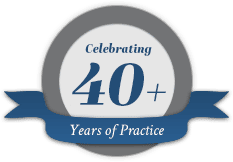Easy and small things in life can be learned by trial and error. Complex and important things are better handled by getting it right the first time. L&I cases are complex and important. This website is designed to give you the key information so you can get it right the first time. Learn from the mistake of others and make smart decisions.
Important Information For Injured Workers
Once you become an injured worker your life changes. The following information will help you see where you fit into L&I’s framework. It will also answer the question you may have: “What am I going to do about L&I?”
L&I Claim and Benefit Information
- L&I Claims – A Beginners Complete Guide
- What Is Workers’ Compensation
- L&I Benefit Information for Injured Workers
- Vocational Training – The Ultimate Guide
- How to Disagree with an L&I Decision
- Types of Injury and Disability Claims
- L&I Settlements
Other Types of Claims
- Third Party Claims
- Death on the Job – Fatality
- COVID-19 and L&I Claims
- Employment Law is Not Workers’ Compensation Law
- Apply for Social Security with an Open L&I Claim
- Social Security Offset
- Can I Sue My Employer?
- Construction Site Injuries
- Hanford Workers Help Page
The L&I System
- Injured Workers Rights
- Penalties
- Important L&I People
- Labor & Industries Forms
- How To Get a Copy of Your L&I File
A Little Advice
More Information
Things You Need to Know
- Frequently Asked Questions (FAQ)
- Divorce and Your L&I Claim
- Voluntary Retirement
- Medical Retirement with an L&I Claim
- Stay at Work Program
- Self Insured Employers
- Penalties to Self Insured Employers for Delay of Benefits
- Office of the Ombudsman
Medical Information
A big part of any L&I claim is getting a doctor to help. Learn more here about that.
- Medical Treatment
- Independent Medical Examinations
- L&I’s Medical Provider Network
- (SIMP) Structured Intensive Multidisciplinary Programs
- Amputations and Prosthetics in L&I Claims
- News For Physicians About The New L&I Provider Network
- Moving Out of State or Out of Country
L&I Permanent Partial Disability Settlements (PPD)
- Permanent Partial Disability (PPD) L&I Settlement In Washington State
- WA L&I PPD Settlement Rules
- How to Settle a Washington State Labor and Industries Claim
Pensions and Settlement Agreements
Working With Lawyers
What about lawyers? Do I need one? Will it help? What will it cost? Good questions. Check here for answers and information about lawyers and contingent fee agreements.









